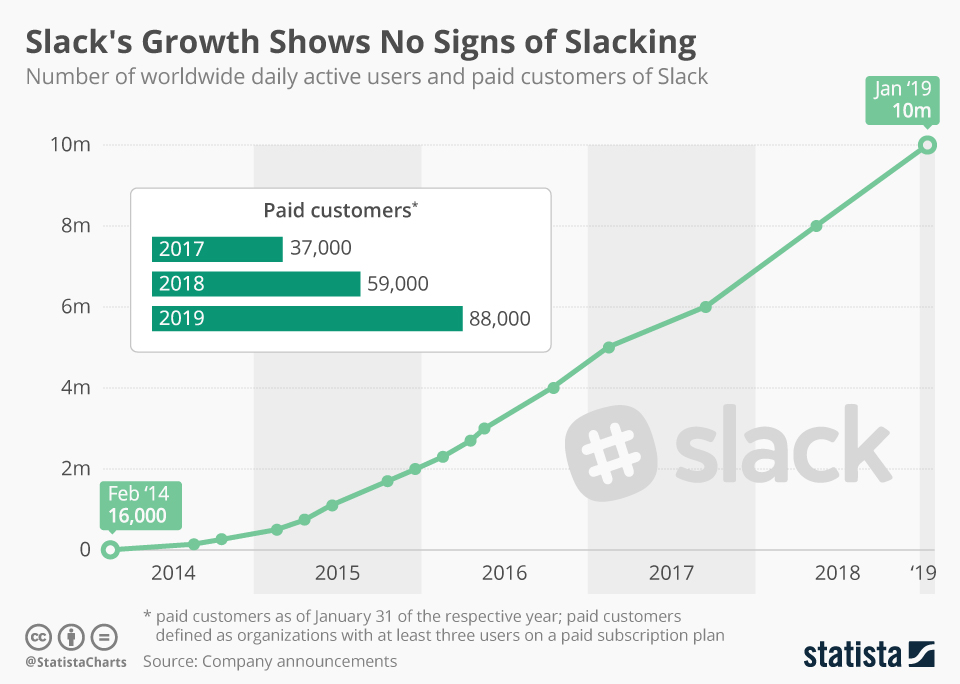Edited on: 01.16.24

Outsourced software development and IT outsourcing, in general, are huge things now. As with all the huge things out there, this one is already wrapped in myth in some aspects and has its fair share of both glorious successful outsourcing examples in business and Halloween-ish urban legends. Meanwhile, the market is growing: In 2023, the IT outsourcing sector’s market value was expected to reach $430.53 trillion, with a projection to rise to $587.3 trillion by 2027. This growth represents a CAGR of 8.07% between 2023 and 2027. The U.S. was expected to generate the most revenue in this sector, amounting to $156.20 billion in 2023.
By now, the picture looks as Singapore’s legend Lee Kwan Yew once put it:
If you deprive yourself of outsourcing and your competitors do not, you’re putting yourself out of business.
Content:
- Alibaba
- Slack
- GitHub
- Unilever
- AppSumo
- BaseCamp
- Opera
- Skype
- CitiGroup
- Bonus cases: When outsourcing becomes the norm
- What do these examples of outsourcing have in common?
The reasons companies outsource at least some IT processes, and especially development, vary, as do the actual benefits brought to the table. For many, reducing the cost of development is the primary factor (and there are countless opportunities to achieve that). Some simply require specific types of expertise they have no time (or desire) to develop in-house. Oftentimes, when your business idea is fresh and new, it’s really better to engage the right professionals ASAP instead of waiting until you’ve got the core team competent enough to build the minimum viable product. There are other considerations at play, as well, and some are even more important than these. The big question is, what to do to ensure your expectations are safely transformed into results?

By now, a sort of Hall of Fame has formed, counting dozens of IT outsourcing success stories. There’s definitely something to learn from them, and intriguingly, they all have something in common.
Here, we’ll go through the Top 11 of successful outsourcing examples in business.
Outsourced what: core development (specifically iOS development)
Why: good old cost optimization
Easily the most cited story of this kind. The cross-platform messaging / VoIP platform that Facebook has bought for $19 billion – and most of us are familiar with – had, in fact, outsourced roots. The founders came up with the idea in 2009, while struggling to find a job at, ironically, Facebook. They hired Igor Solomennikov to carry off the iOS development first (who later joined the team on a regular basis), and then almost all the core development was entrusted to professional teams from Eastern Europe. The platform took off to the top rankings on Google Play and App Store across platforms, eventually almost to bury the SMS technology as an afterthought.
Fact to know: (1) Administration/support outsourcing, (2) application development and maintenance outsourcing, and (3) web hosting were the three most important areas, accounting for over half of the market value.
Alibaba
Outsourced what: website development
Why: localization concerns
The multinational eCommerce & tech conglomerate is now arguably as well known as the Great Wall of China – while definitely being much more accessible from abroad. The business started in 1999, in an era when companies were increasingly using websites for customer relations. The founder, Jack Ma Yun, outsourced developers from the U.S. to create a website that would appeal to both the audience at home and across the English-speaking world. Granted, now the outsourcing goes the opposite way, too, with Northern American companies drawing on Asian expertise in a number of fields. What’s important here, though, is the genius idea that online content localization is much deeper than just translating words. This brought Ma Yun the status of magnate and Alibaba about $56.152 billion global revenue as of 2019.
Slack
Outsourced what: app & website design
Why: need for better UX
When Slack first started in 2013, it was far, very far from today’s team collaboration tool that 10 million users were enjoying as of January, 2019. It was more like an IRC inside a browser, and there are few people who even remember what the early prototype looked like. However, it turned out that among many similar systems, this one won the market. The secret? Consensus opinion claims it just somehow looks, feels and sound different from the competitors. This happened largely thanks to outsourcing the general design concept – with the effect of revamping the app, logo and commercial website. In 2017, Slack raised $250 million round of investment (valuation at $5 bln).

Infographic: Slack’s Growth Shows No Signs of Slacking | Statista
However, Slack was about to see even greater success. Below is the projected number of daily and monthly active Slack users worldwide from 2019 to 2025 (in millions). The Covid pandemic and remote work which became the new normal, made Slack a necessity for over 200.000 companies worldwide.

Source: Projected number of daily and monthly active Slack users worldwide from 2019 to 2025 (in millions), Statista
GitHub
Outsourced what: website backend development
Why: need or perfect Git expertise
There’s hardly a software developer who knows nothing of Git, and 40 million Git users actually use GitHub for version control, source code management, bug tracking, you name it. GitHub is the hosting provider that also adds valuable features.
Its founders, originally based in San Francisco, started off by writing in the Ruby on Rails framework. At a point, it became apparent their solution was in need of people extremely proficient in Git itself. The specialist was found, Scott Chacon, and was engaged as an outsource presence behind the project. This allowed to make GitHub as perfect for Git as it could be, with Microsoft acquiring it for $7.5 billion in 2018.
Fact to know: For an employee in the IT outsourcing sector in 2023, the average hourly cost stood at $123.60. (Statista)
Unilever
Outsourced what: ERP system integration project
Why: extending and streamlining operations, non-tech company
Once upon a time, a consumer goods giant could have hired a development team, for sure, but preferred to outsource it. The year was 2005, and the company had about 200,000 employees worldwide, extending operations to dozens of countries. When encountered the need to merge different ERPs across their operating sphere, the British-Dutch enterprise made a master move by outsourcing the necessary talent. Doing otherwise might have been detrimental to the inner focus of the company, and we see hundreds of smart C-suites outsource the non-core activities, taking their example. As of now, Unilever’s operations run smoothly, with the company’s net income estimated at €9.808 billion.

Outsourced what: support service for Google AdWords (and more)
Why: Google still has much more to offer to the world 🙂
It is difficult to estimate how extensively Google has outsourced different IT jobs because of the sheer scale. Since we’re speaking of the “classic”, most frequently cited cases, here’s the one that made it to headlines in 2011: Google AdWords. This service offers coverage to about 90% of Internet users across the world and is used by many a marketer. Around a thousand outsourced reps were entrusted with providing client support via phone and email, all of them scattered around the globe. The experience proved lucrative enough for Google to go further in 2016 with software development, IT infrastructure management, and so on. As of now, this allows the company to focus on innovations that hit even more headlines than before.
Fact to know: Companies that outsourced HR functions could save an average of 27.2%. (NAPEO)
[Want to cut costs on your app development but don’t know where to start? Contact us to get your free consultation]
AppSumo
Outsourced what: website development
Why: hiring an in-house team full-time was a too-dramatic move
As of now, AppSumo is a treasury of daily deals for everyone interested in digitally distributed goods like software, ebooks, learning courses, etc. While originally, the website offered lifetime deals for SaaS at reasonable prices, now its range has extended. The funny story behind this success is that Noah Kagan, the founder of the enterprise (himself a former Facebook and Mint.com employee) used outsource to the maximum profitable extent imaginable: paying $50 for a PayPal integration. One button, one remote developer, one great idea – one start of the enterprise currently valued at $2 million and boasting a 700,000 long subscribers list. Curiously, the original reason to outsource was that AppSumo started as a “side project,” – and Kagan felt there was no need to hire a team in-house. The outcome was a well-balanced outsourcing strategy.
Basecamp
Outsourced what: miscellaneous improvements to the platform
Why: need for refreshment / non-core activity (at first)
Basecamp is a tool intended for project management, with functionalities like time planning, messaging/chats, to do lists, etc. The initial launch (2004) was the brainchild of a web consulting company founded 5 years earlier in Chicago called 37signals (incidentally, the one that started Ruby on Rails). The curious thing is that 37signals has now been renamed Basecamp in honor of a project that brought it more revenue than anything else. Of course, as the tool was originally not the core competency, the company outsourced its development. It’s said a lot of changes and improvements were required before the app gained its current standing – and most of these were done by developers working remotely. In the end, the company decided to make the tool its principal direction of future activity.
Opera
Outsourced what: web browser & related software development
Why: lower costs + better scalability
There’s this list of several major browsers out there that all front-end developers know or at least consult whenever trying out new HTML/CSS features. Needless to say, Opera is on that list and looms quite large on the market. It began in 1994 as a project by Telenor, the largest Norwegian telecom company, and shortly thereafter became an enterprise in its own right. The C++ code behind the browser itself, as well as the accompanying software, were written by developers working remotely and located in 25 different places. The reason was simple – the desire for lower financial risk that comes with lesser investment, as the company did not dispose of all that much at the time. The activity proved reasonably scalable as the browser capitalized on cross-platform support, specifically mobile.
Skype
Outsourced what: back-end development
Why: need for specific expertise
“To skype someone” is, by now, a dictionary entry, which speaks volumes about whether or not the project under that name turned out successful. In 2003, the founders (themselves from Sweden and Denmark) outsourced the actual back-end development of the platform to Estonian professionals, who created what we now know and use. The features like video chat, instant messaging and file transmission have made it indispensable. After just two years, in 2005, Skype was acquired by eBay for $2.5 billion, and in 2011, by Microsoft for $8.5 billion. This is one of those stories that have drawn attention to the IT outsourcing potential of Eastern Europe, with dozens of other cases where development or IT infrastructure projects were successfully outsourced to Estonia, Ukraine, Poland, Russia and several other countries in the region.

CitiGroup
Outsourced what: tech development
Why: to save costs
CitiGroup, a renowned multinational investment corporation based in the US, stands out as a pioneering example of corporate outsourcing. Since 1992, CitiGroup has embraced global talent, employing staff from countries like India, the Philippines, and Poland. This strategy took a significant leap in 2014 when CitiGroup reduced its headquarters’ workforce by 11,000 positions, including a substantial number of IT specialists, shifting these roles to international locations. This strategic move led to an impressive annual saving of $1.1 billion for the company.
The case of CitiGroup underscores that outsourcing is a practical approach for not just startups but also established corporations and banking institutions. It highlights the potential benefits of leveraging global talent pools for operational efficiency and cost savings.
Bonus cases: when outsourcing becomes the norm
Aside from the more “traditional” storyline, where a company outsources some IT processes for its own inner needs, there has emerged a more interesting approach. Some very successful enterprises have, by the very nature of their products, created something like new worlds for custom software development professionals to explore. In these realms, outsourcing is rapidly becoming the norm for most players. Let’s look at just two such cases to illustrate what’s going on.
- Salesforce.com is a giant cloud-based corporate solutions provider, most famous for its CRM. The company’s products are used across the business world, for example, by Unilever. One of the secrets of the company’s solutions’ success is that they offer a great potential for customization. All businesses have their individual needs and may require slightly different sets of tools and features to match their purposes. Instead of squandering all their effort on satisfying these individual needs, Salesforce.com has basically given these jobs to third parties. The company has an impressive partner community over AppExchange. Also, “Salesforce developer” is by now a job title that outsourcing companies hunt for.
- HubSpot is a platform used to streamline corporate marketing and sales processes, as well as lead generation and SMM, currently boasting about 56,000 users. Once you become aware of what the “standard” HubSpot popup window looks like, you’ll notice it on many commercial websites, albeit in different colors. Many businesses feel the need to customize the development of content they use with HubSpot, and there is now a community growing around the offer to develop customized online content for the platform.
In such cases, the company creates the overarching platform, which is then used by third parties to deliver products to the end users – a model that can’t help but encourage outsourcing.
Fact to know: Strong problem-solving skills were the most important factor for small businesses choosing an outsourced team.
What do these examples of outsourcing have in common?
So there we have a number of widely discussed success stories. Is there anything to learn from them, or are they just lucky coincidences? If you study these (and similar) IT outsourcing examples in business, there definitely is something that they all share, even though they are so different. Here are the three things that may have accounted for the wins.
1. They all had a strong vision
This does not mean that everyone in the company knew exactly what the deliverable would turn out to be in 5 years. Although setting clear objectives and SoW is often crucial for successful outsourcing, the main factor here was that the underlying idea was strong enough without being too narrow. This, in turn, allowed to define what professionals were required and grasp any unexpected opportunity along the road. Outsourcing gave the opportunity for these companies to focus on the business vision, not on the details.
2. They found the right professionals
It is one thing to engage a development team to do “all that IT stuff” and quite another to know what competencies you need to search for. Maybe you need a strong back-end developer. Maybe it’s someone competent in a certain framework or a certain target system/platform. Slack knew they needed a front-end revamp; GitHub wanted someone experienced specifically in Git. Thankfully, nowadays, the choice of the right professionals can be “outsourced” to specialists, as well, to make sure you pay for what you really need.
3. They made the most of opportunities
As in the case with Basecamp, their product pulled into the center of their business model, it is obvious in most of these cases that the companies were extremely good at identifying opportunities. Even when the initial reason for outsourcing is purely financial, there are still many other possibilities that open, many of them quite unexpected. Sometimes, the outsourced team experienced in a narrow field can solve very specific problems, allowing you to fill a niche in the market you didn’t know existed.
***
In the long run, outsourcing is a sort of art. The most spectacular cases are often the result of inspiration – but it’s also a strategy. Once you know what exactly you want to outsource and why, you are able to define who to contract, and the good thing is that qualified experts can offer help with finding the perfect people to drive your vision to success.

